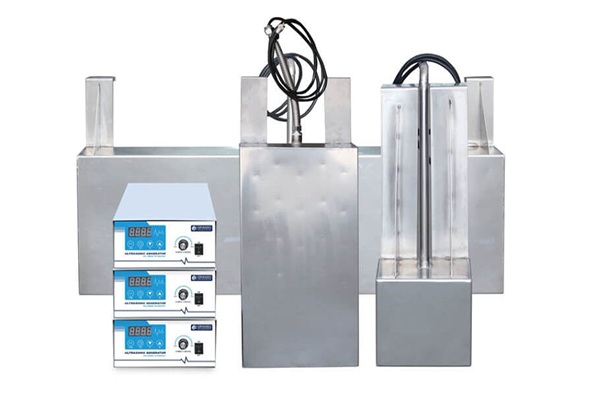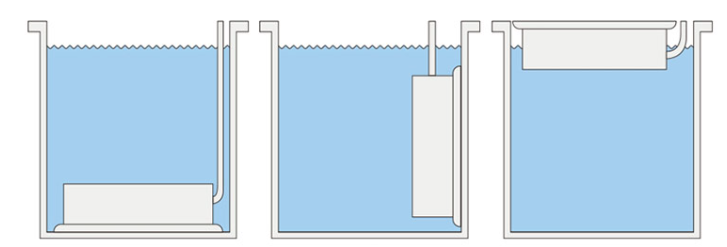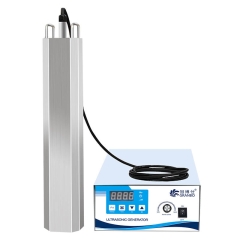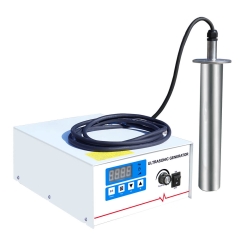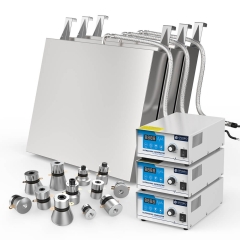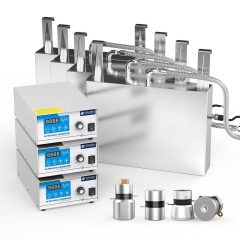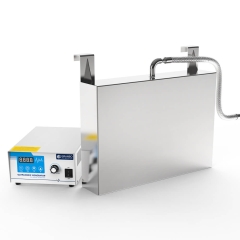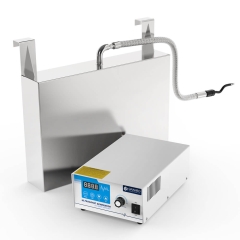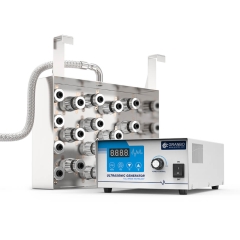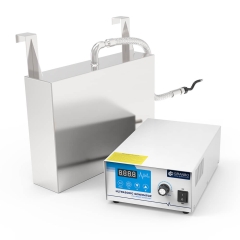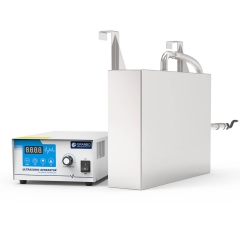Immersion Ultrasonic Cleaner Effectiveness,Choosing the Right Parameters for Optimal Results
Immersion ultrasonic cleaners are becoming increasingly popular across various industries due to their efficiency, environmental friendliness, and wide applicability. But how effective are they really? And how do you choose the right equipment and parameters to ensure optimal cleaning results?
Working Principle and Advantages of Immersion Ultrasonic Cleaners
Immersion ultrasonic cleaners operate by converting electrical energy into high-frequency mechanical vibrations using an ultrasonic transducer. These vibrations are transmitted through the cleaning solution to the workpiece surface. The high-frequency vibrations create countless microscopic bubbles in the cleaning solution, which implode, generating powerful shockwaves that dislodge and remove contaminants from the workpiece.
Compared to traditional cleaning methods, immersion ultrasonic cleaners offer several advantages:
- High Cleaning Efficiency: Ultrasonic cleaning penetrates crevices and blind holes effectively, removing stubborn contaminants far more efficiently than manual cleaning or other traditional methods.
- Environmentally Friendly: Ultrasonic cleaning generally avoids the use of harsh chemical solvents, reducing environmental pollution and health risks for operators.
- Wide Applicability: Immersion ultrasonic cleaners can be used for cleaning workpieces made from various materials, including metals, plastics, glass, and ceramics, making them versatile tools in diverse settings.
- High Flexibility: With the transducer separate from the main unit, immersion ultrasonic cleaners offer flexible transducer placement within the cleaning tank, accommodating workpieces of varying shapes and sizes. Multiple mounting options (flange, threaded clamp, flexible tubing, vacuum bar bolt clamping) further enhance adaptability.
- High Degree of Automation: They can be easily integrated into automated production lines, enabling high-throughput, batch cleaning, and significantly improved production efficiency.
Installation Methods and Their Advantages
The installation methods of the submersible ultrasonic transducer plates are diverse, including flange type, threaded locking type, metal hose immersion type, and vacuum strip bolt locking type. These different installation methods allow users to select the most suitable solution based on their needs. For example, the flange type is suitable for situations where the position needs to be fixed securely, while the metal hose immersion type offers greater flexibility, making it easier to adjust and disassemble.
This variety of installation methods greatly expands the range of applications, from precision instruments requiring high-precision cleaning to automotive parts that require rapid and efficient cleaning. The submersible ultrasonic transducer plates can provide appropriate support for each scenario.
Parameter Selection and Application Examples
Choosing the appropriate ultrasonic cleaner and parameters is critical for optimal results. Key considerations include:
- Frequency Selection: Different frequencies are suited to various materials and contaminant types. For example, 20-25kHz is suitable for de-rusting steel; 28-40kHz for metal parts; 40-80kHz for high-precision electronic components; and frequencies above 100MHz are used for cleaning silicon wafers and LCD glass.
- Power Density Selection: Insufficient power density may result in ineffective cleaning, while excessive power density can damage the workpiece. Power density selection requires consideration of workpiece size, quantity, and contaminant adhesion. For instance, cleaning metal parts at 20-30kHz typically uses a power density of 0.3-0.5W/cm²; for electronic products at 28-40kHz, it’s 0.4-0.8W/cm²; and for large workpieces, it can reach 10-30W/cm², subject to specific requirements.
- Cleaning Solution Selection: The type, temperature, and concentration of the cleaning solution significantly impact cleaning performance. The appropriate cleaning solution must be chosen based on the workpiece material and contaminant type.
Here are some examples of immersion ultrasonic cleaner applications:
Precision Instrument Manufacturing: Cleaning delicate instrument components to ensure cleanliness and precision.
- Aerospace: Cleaning aerospace components to remove oil and debris.
- Automotive Manufacturing: Cleaning automotive parts to improve product quality.
- Medical Device Manufacturing: Cleaning medical devices to maintain sterility and hygiene.
- Electronics Manufacturing: Cleaning electronic components to remove flux and contaminants.
Limitations and Future Developments of Immersion Ultrasonic Cleaners
While immersion ultrasonic cleaners offer many advantages, certain limitations exist:
- Cleaning Effectiveness Influenced by Multiple Factors: Cleaning effectiveness is influenced by ultrasonic frequency, power density, cleaning solution, and cleaning time. Careful parameter adjustment is crucial for optimal results.
- Not Suitable for All Contaminants: Extremely stubborn or strongly adhering contaminants might require additional cleaning methods in conjunction with ultrasonic cleaning.
- Potential for Damage to Sensitive Materials: Excessive power density or inappropriate cleaning solutions can damage sensitive materials.
With careful selection and application, immersion ultrasonic cleaners significantly enhance cleaning efficiency, reduce costs, and improve environmental friendliness. Continued technological advancements promise even greater impact in the future.
